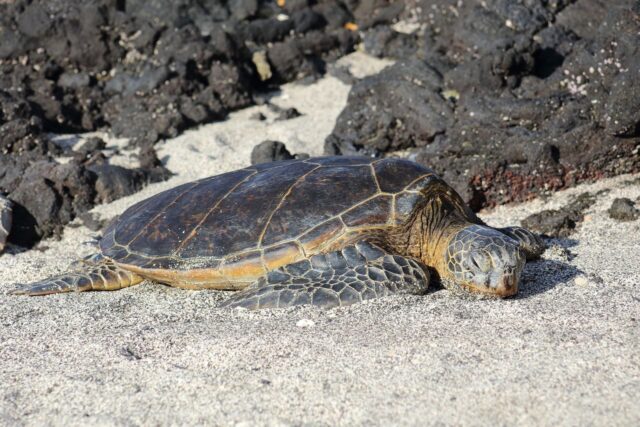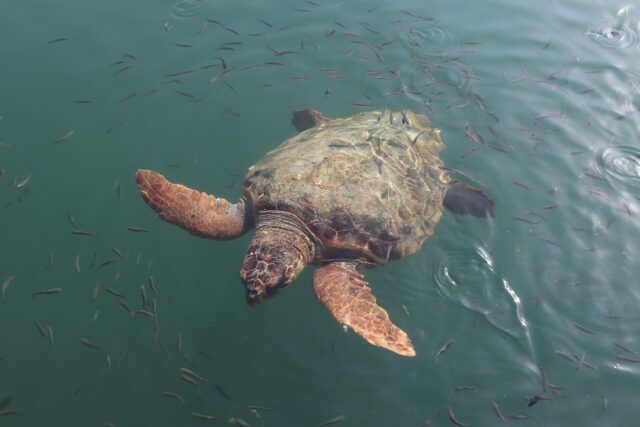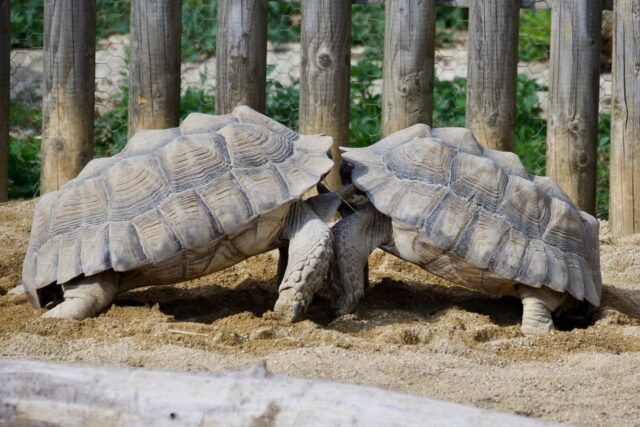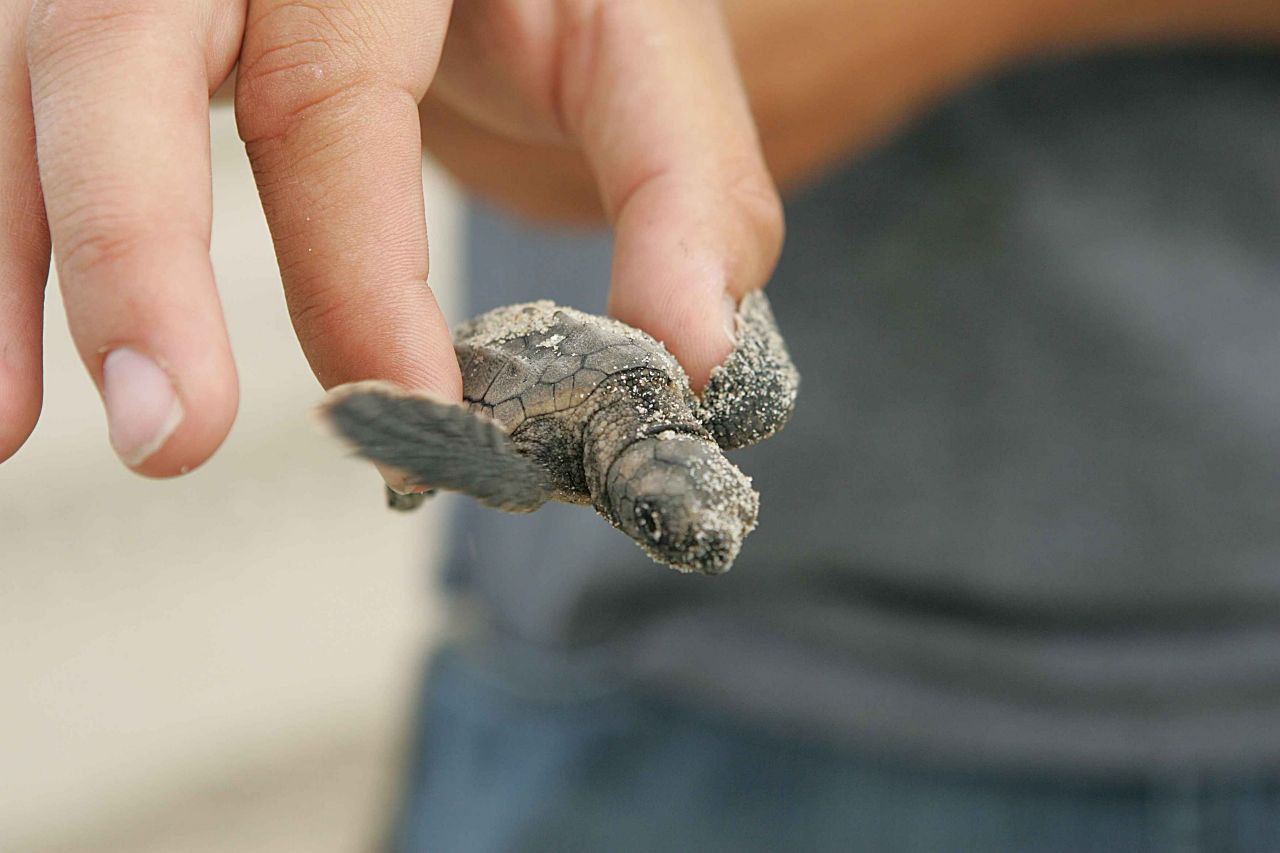Sea turtles are among the most amazing inhabitants of the Cypriot coast. These ancient creatures have inhabited the waters of the Mediterranean for millions of years, returning to the island every year to lay their eggs in the warm sand. Cyprus is considered one of the most important nesting sites for them in the eastern Mediterranean, and you can see turtles here not only in zoos and aquariums, but also in the wild—on beaches, in protected areas, and while diving.
Contents
Types of sea turtles in Cyprus
There are two main species of sea turtles found off the coast of Cyprus:
- The loggerhead turtle (Caretta caretta) is a large species with a massive head and a brownish-red shell up to 90 centimeters long. Adults can weigh over 100 kilograms.
- The green turtle (Chelonia mydas) is rarer and more protected. Its shell is olive-green, and its diet is primarily plant-based.
Both species are protected by international conservation organizations and are included in the IUCN Red List.
Loggerhead turtles prefer gently sloping sandy beaches, while green turtles often prefer more secluded areas of the coast. Adult females return to the same beach where they hatched to lay their eggs, using the Earth’s magnetic field as their guide.
Main nesting sites
Most turtle nests in Cyprus are concentrated on the island’s west coast. The most famous places to see turtles in the wild are the Akamas Peninsula and Lara Bay near Paphos.

Lara Bay
This is the main protected nesting area for sea turtles in Cyprus. The beach is part of the Lara-Toxeftra Nature Reserve, located within the Akamas National Park. It offers ideal conditions for turtle breeding: clean sand, low light, and minimal human disturbance.
From May to September, females emerge onto the shore at night to lay eggs. A single clutch can contain 80 to 120 eggs, buried up to half a meter deep. After 6 to 8 weeks, the young emerge and head for the sea, guided by the moon’s reflection on the water.
During the day, you can see special net structures installed over the nests on the beach – they protect the clutches from predators and tourists.
Toxeftra Beach is located near Lara Bay and is also part of a protected area. Both green and loggerhead turtles nest here. The beach is closed to the public, but can be reached on foot or as part of an ecological tour.
Akamas Peninsula. Besides Lara Bay, sea turtles can be found in the small bays of Akamas, especially around Fontana Amorosa and Aphrodite Beach. These areas are known for their crystal clear waters and abundant marine life, making them popular among divers.
Other habitats
In addition to the west coast, turtles are also found in other parts of the island:
- Chloraka Bay and Coral Bay are located near Paphos, where you can observe turtles from the shore or during underwater excursions.
- Latchi and Polis Chrysochous beaches are in the northwest of the island, where turtles often swim to the shallow waters.
- Protaras and Cape Greco are in the eastern part of Cyprus, where sea turtles are most often encountered while diving and snorkeling. There are no nesting areas here, but the water is so clear that adults can be seen swimming peacefully near the reefs.
Where and how can you see turtles in the sea?
For those who want to see sea turtles in their natural environment, excursions and diving tours are organized in Cyprus.
- Snorkeling at Cape Greco is one of the most popular spots for snorkeling. On clear days, green turtles are often seen feeding near the underwater rocks.
- Diving in Coral Bay allows you to see turtles near sandy reefs and rocky caves.
- Boat trips from Latchi Port – while boating along the coast of the Akamas Peninsula, you can often spot turtles rising to the surface for air.
Turtles aren’t afraid of people, but getting too close is prohibited. Touching the animal or interfering with its swimming is a violation of conservation regulations.

Environmental projects and conservation
Cyprus actively participates in sea turtle conservation programs. Since 1978, the Cyprus Turtle Conservation Project, established with the support of the Department of Fisheries and Marine Research, has been operating on the island.
The project’s main objectives are population monitoring, nest protection, information for tourists, and outreach to local residents. Volunteers and scientists patrol the beaches at night, marking new nests and installing protective fencing.
Particular attention is paid to light pollution: bright lights near beaches confuse turtle hatchlings, so the use of powerful lighting and nighttime activities are prohibited in protected areas.
The best time for observation
The sea turtle nesting season in Cyprus lasts from May to October. In June and July, females actively lay eggs, and from late July to September, you can see the hatchlings hatching and heading for the sea.
Turtles are most likely to be seen early in the morning or at sunset, when the beaches are not yet crowded. Adult turtles are most often encountered during diving or boating during the warmer months of June through September.
Tips for tourists
- Do not approach the turtles while swimming or try to touch them.
- On nesting beaches, it is prohibited to place umbrellas and sun loungers near marked nests.
- Do not leave trash, especially plastic bags, which turtles may mistake for jellyfish and swallow.
- At night, do not use flashlights or torches when taking photographs, so as not to frighten the animals.
Responsible tourist behavior helps maintain the delicate balance of the ecosystem in which turtles play a key role.
Why are sea turtles important to the ecosystem?
Sea turtles are a vital part of the marine environment. They regulate jellyfish populations by eating large quantities of them, and they promote the spread of seagrasses by feeding on their excrement. Furthermore, the sand stirred by the turtles when laying their eggs is enriched with oxygen, creating a favorable environment for plant growth.
Conserving these ancient creatures is not only about caring for the animals, but also about the balance of Cyprus’s marine environment.

Cyprus is one of the few places in the Mediterranean where sea turtles can be seen in the wild. Lara Bay, Akamas, Cape Greco, and Coral Bay are the best spots to observe these unique animals. Respectful tourists and the efforts of conservationists help preserve the turtle population, so that future generations can witness these ancient sea creatures returning to Cypriot beaches under the moonlight.
















